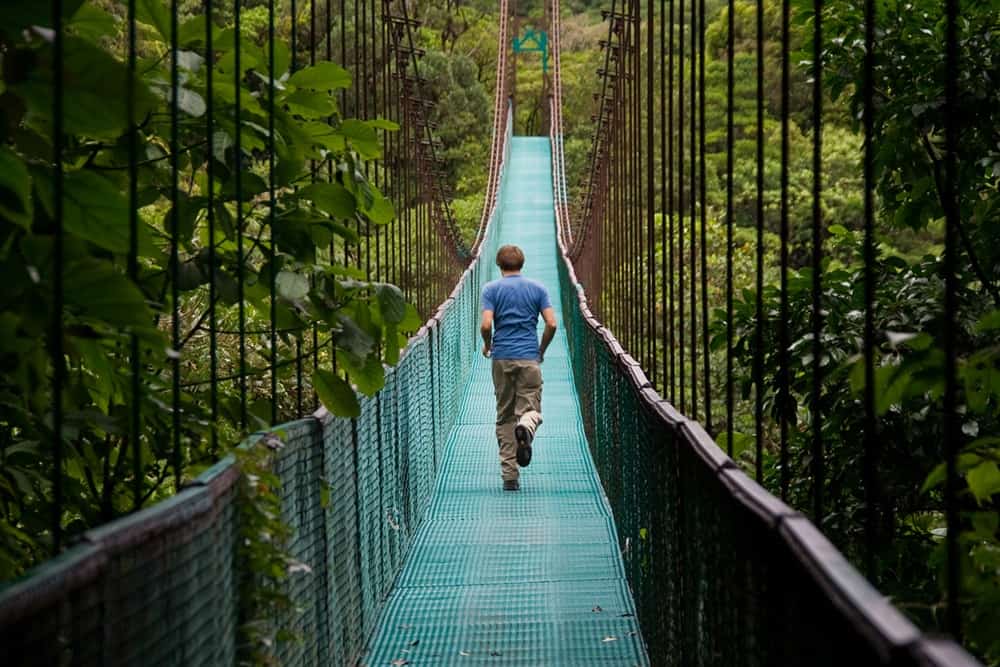Variety Magazine named our small piece of paradise a top filming destination in its latest featured article, “Ten Locations to Die For,” spotlighting our country’s famous landscapes and growing film industry. The recognition highlights Costa Rica’s appeal to filmmakers looking for varied settings, stable infrastructure, and eco-friendly production options, positioning it as a rising star in global cinema.
Varied Landscapes for Every Film
Variety praises Costa Rica’s geographic range, spanning rainforests, volcanoes, beaches, and rivers, making it a magnet for filmmakers. “Costa Rica is ramping up efforts to become a strong contender in global film production. A compact nation with a growing cash rebate scheme, skilled bilingual crews, close proximity to the U.S., political and economic stability, rich natural landscapes and — perhaps most importantly — a keenness to better support productions,” the article states. This variety allows directors to shoot everything from fantasy epics to intimate dramas in one country.
Topping the list is La Fortuna and Arenal Volcano, with its conical peak rising 1,657 meters. Its rainforests, waterfalls, and Lake Arenal, which generates 60% of Costa Rica’s electricity, starred in Hollywood’s “After Earth.” Just about three hours from San José and Liberia, with a local airstrip and hotels from luxury resorts to simple lodges, La Fortuna makes it easy access. Monteverde’s Cloud Forest, another standout, is attractive due to its biodiversity, ideal for fantasy or nature-driven stories.
The Nicoya Peninsula’s Santa Teresa and Malpaís attract filmmakers with rugged beaches, while Manuel Antonio National Park blends rainforest and ocean, a long-time favorite for its cinematic appeal. Corcovado National Park on the Osa Peninsula, called one of Earth’s most biologically intense places, offers untouched jungles and rare wildlife.
Tortuguero and Cahuita on the Caribbean coast provide sea turtle nesting sites and vibrant culture, perfect for coastal tales. Rio Celeste in Tenorio Volcano National Park, with its vivid turquoise waters, appears “straight out of a fantasy film,” Variety notes. Golfo Dulce’s marine-rich waters, Papagayo Peninsula’s upscale resorts like the Four Seasons, and the Central Valley’s coffee plantations and waterfalls, noted for their authentic charm, complete the list.
Infrastructure and Support Drive Appeal
Costa Rica’s appeal extends beyond its scenery. Stable infrastructure, political stability, and proximity to the U.S. make it a practical choice for productions. In 2021, the Costa Rica Film Commission and Procomer launched six Film Friendly Zones (FFZs), chosen for scenic variety and logistical support.
These zones simplify permits and access, as seen in La Fortuna’s robust hospitality network or Bahía Ballena’s eco-lodges and transport services. A growing cash rebate scheme and bilingual crews enhance the package, positioning Costa Rica against Panama and the Dominican Republic.
Sustainability also draws eco-conscious filmmakers. With 93% renewable energy and decades of deforestation reversal, Costa Rica aligns with green production goals. “This recognition highlights our potential,” says a Costa Rican Film Commission spokesperson. “We’re a partner in storytelling, not just a backdrop.”
Accessibility further adds to Costa Rica’s appeal. Domestic flights with Sansa, like those to Palmar Sur for Bahía Ballena, take 40 minutes from San José, while boats to Tortuguero outpace buses. This convenience, combined with a welcoming culture, keeps productions on track. As Hollywood seeks immersive natural settings, Costa Rica delivers locations that feel both wild and reachable.
The Variety feature marks a turning point for Costa Rica’s film industry. With its mix of natural beauty, practical support, and eco-friendly ethos, our country is hoping to host more blockbusters. Whether it’s Arenal’s volcanic drama, Monteverde’s rainforest, or Tortuguero’s coastal authenticity, these locations show Costa Rica is more than just a travel destination.






